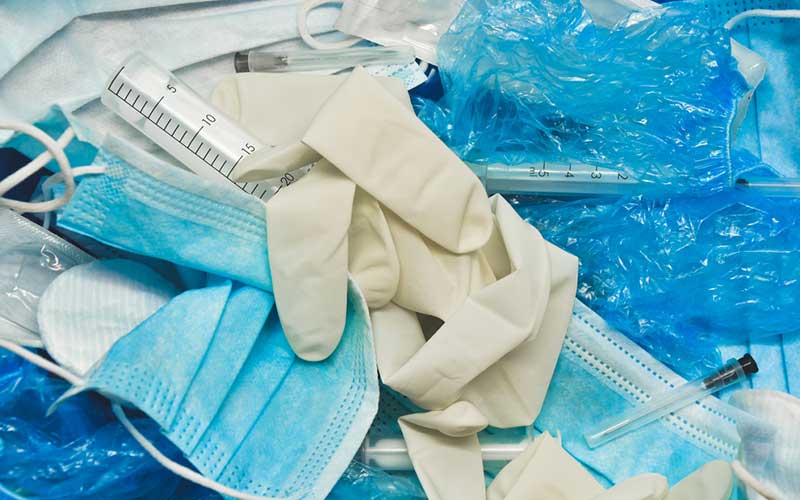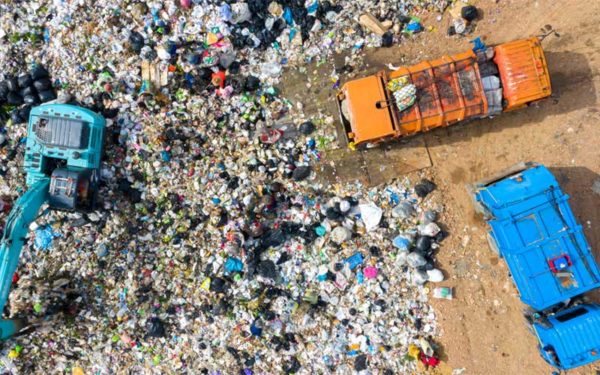
Rhode Island stopped burning medical waste in the 1990s, and there's no good reason to go back now. Photo: Shutterstock
Just off I-95 in West Warwick, Rhode Island, stands MedRecycler, a company that is aiming to build and run facilities for burning medical waste. The company is targeting an industrial park in its own hometown as a location to build one of these facilities. Its goal? To import and burn up to 70 tons of New England’s medical waste per day.
MedRecycler labels itself and its high-heat technology, called pyrolysis, as environmentally friendly. But burning waste of any kind is far from safe for the environment, let alone the people living in neighboring communities. In fact, medical waste incinerators emit some of the most dangerous pollutants known to humankind, and the proposed facility in West Warwick would be no different.
Rhode Island made the decision to move away from burning its medical waste long ago, and there is no good reason to go back now. At a time when Governor Raimondo has led the nation in her swift response to the COVID-19 pandemic, we cannot now lose sight of our responsibility to protect the health and safety of our communities and environment. Rhode Island officials should reject MedRecycler’s proposal to anoint the Ocean State as New England’s dumping ground for toxic medical waste.
Burning Medical Waste is a Bad Idea
Medical waste is made up of about 25% plastic, making it all the more toxic to burn. When plastic is incinerated, it releases hazardous heavy metals like lead and mercury, as well as highly toxic pollutants like dioxins, into the air.
Dioxins, in particular, pose tremendous risks for those living in frontline communities – those who live and work near incinerators and are regularly exposed to toxic emissions. Dioxins are poisonous compounds that break down very slowly in our environment and in our bodies. They can cause cancer, liver and endocrine damage, infertility, and birth defects. According to the Environmental Protection Agency, medical waste incinerators are the second-largest source of dioxin emissions in the country. Because of this, the World Health Organization discourages the burning of medical waste altogether.
Despite this toxic reality, companies like MedRecycler want to bring back this dangerous and outdated practice through supposedly “new” technologies like pyrolysis. But now is not the time to reverse our progress on dioxin emissions.
Medical Waste Pyrolysis: Different Process, Same Risks
The proposed MedRecycler facility in West Warwick would run 24/7 and burn waste collected from healthcare facilities across New England. If MedRecycler sticks with its plan to burn 70 tons of waste per day, it would rival the largest medical waste incinerator in the country – Baltimore, Maryland’s Curtis Bay Medical Waste Services incinerator.
Pyrolysis is a different process than the “mass-burn” incineration performed at facilities like Curtis Bay, but the results are the same – waste is heated to create a synthetic gas, which is then combusted to produce energy. In the end, we’re left with toxic ash and char and dangerous air emissions. Companies like MedRecycler claim that pyrolysis is a clean way to convert “waste-to-energy,” but it’s really just as dirty, dangerous, and climate-damaging as mass-burn incinerators. What’s more, although pyrolysis technology is not new, using it to burn medical waste is relatively untested.
As with mass-burn incineration, pyrolyzing plastics can result in dioxin emissions. Dioxins form when plastics are converted into gas – or gasified – at temperatures lower than 1200°C. MedRecycler’s plan is to operate at 800° to 900°C, posing significant emissions risks to homes and businesses, as well as to children at the nearby elementary school.
What’s worse, MedRecycler’s application to the Rhode Island Department of Environmental Management makes no mention of dioxins or monitorings for dioxin emissions. Essentially, the company plans to build a ticking time bomb and cover its ears so that it cannot hear the noise.
We Can Reduce Medical Waste Without Burning It
As the U.S. has moved away from burning medical waste, many healthcare facilities have implemented programs to reduce their trash, including their single-use plastic waste. Rhode Island Hospital, as well as two of the state’s other Lifespan Care facilities, collect sterile wrap from operating rooms for recycling – reducing operating room waste by about 20%. As with other zero waste efforts, such practices can save hospitals money.
What’s more, some medical equipment can be safely reused rather than discarded or recycled. Massachusetts hospitals have begun sterilizing and reusing some of the personal protective equipment, or PPE, relied on by healthcare workers in the coronavirus pandemic. This helps reduce medical waste, but, more importantly, it helps healthcare facilities avoid the dangerous PPE shortages that have loomed over the crisis.
As for the remaining medical waste, the World Health Organization recommends sterilizing it using steam treatment or microwaves, and then landfilling it. Rhode Island currently treats the majority of its medical waste via high pressure steam treatment, and most of the state’s hospitals stopped incinerating medical waste in the 1990s.
This is Not the Time for Rhode Island to Change Course
Before it can operate, MedRecycler must obtain a business license from the Town of West Warwick, as well as a permit from the Rhode Island Department of Environmental Management – neither of which have been approved. And while MedRecycler waits for the Town Council to set a hearing date to review their application, new information implicating the company’s CEO in a price-gouging scam involving N95 masks – vital PPE for healthcare workers – has surfaced, raising further concerns about the company’s ethics and integrity.
This is no time for Rhode Island to change course and start using an untested and dangerous technology to burn its medical waste – all without adequate monitoring. We are not, nor should we be, the dumping ground for the region’s waste, medical or otherwise.



